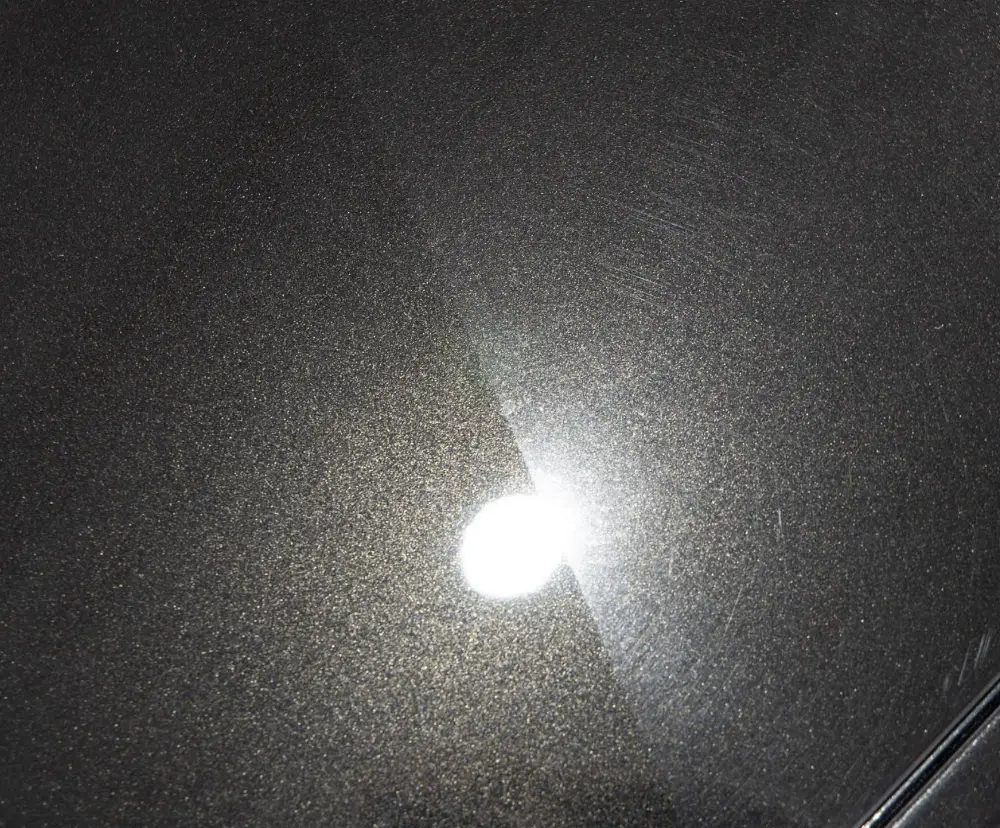How to Tell if Your Vehicle Needs Paint Correctiony
02/26/24 | Admin
Spud Suds Miami

Your vehicle's paint is like its outer armor, protecting it from the elements and giving it a sleek, polished appearance.
Over time, however, factors like UV exposure, environmental contaminants, and improper washing techniques can take a toll on your car's paintwork, leaving it looking dull, faded, or marred. So, how can you tell if your vehicle needs paint correction?
In this blog post, we'll explore some telltale signs that indicate it's time to give your car's paint a little extra TLC with paint correction.
Swirl Marks and Fine Scratches
One of the most common signs that your vehicle needs paint correction is the presence of swirl marks and fine scratches on the paint surface. This becomes more noticeable over time but it’s easier and more cost-effective to resolve earlier than later, as different methods of paint correction may be required to fix the problem.
These imperfections are often caused by improper washing techniques, such as using a dirty sponge or towel, or using a brush on the wrong surfaces. Another cause could be abrasive contact with contaminants during driving. Swirl marks and fine scratches can detract from your car's overall appearance, giving it a dull or hazy look in direct sunlight.
Oxidation and Fading
Oxidation occurs when the clear coat on your car's paint begins to break down due to exposure to UV rays and other environmental factors. In places like Miami and South Florida, UV rays are some of the most powerful. Exposure to this climate over time can result in a chalky or cloudy appearance, especially on horizontal surfaces like the hood and roof, or even the top of trunks.
Similarly, fading occurs when the pigments in the paint lose their vibrancy over time and the color appears dull or washed out. If you notice that your car's paint looks faded, it may be time for paint correction to restore its shine.
Water Spots and Etching
Water spots and etching are another common problem that can indicate the need for paint correction. Water spots occur when mineral deposits from hard water evaporate on the paint surface, leaving behind unsightly marks.
Etching, on the other hand, occurs when acidic contaminants like bird droppings or tree sap eat away at the clear coat, leaving behind permanent damage. If this is left untreated, water spots and etching can cause long-term damage to your car's paint and become more expensive to fix, so it's essential to address them promptly with paint correction and before the issue gets out of hand.
Lack of Gloss and Depth
Finally, if your car's paint lacks the deep, glossy finish it once had, it may be a sign that it needs paint correction. Over time, pollutants and contaminants can build up on the paint surface, causing it to lose its shine and depth.
Paint correction involves removing these contaminants and restoring the clarity and glossiness of the paint. The result? Your car has a showroom-worthy finish once again.
If you've noticed any of these signs on your vehicle's paint, it's time to consider paint correction. At Spud Suds, we are specialists in restoring the beauty and luster of your car's paint through accurate and precise paint correction techniques.
Whether your vehicle needs minor touch-ups or a complete overhaul, we have the expertise and tools to get the job done right. Don't let dull, faded paint detract from the appearance of your vehicle. Contact Spud Suds today and give your car the attention it deserves.